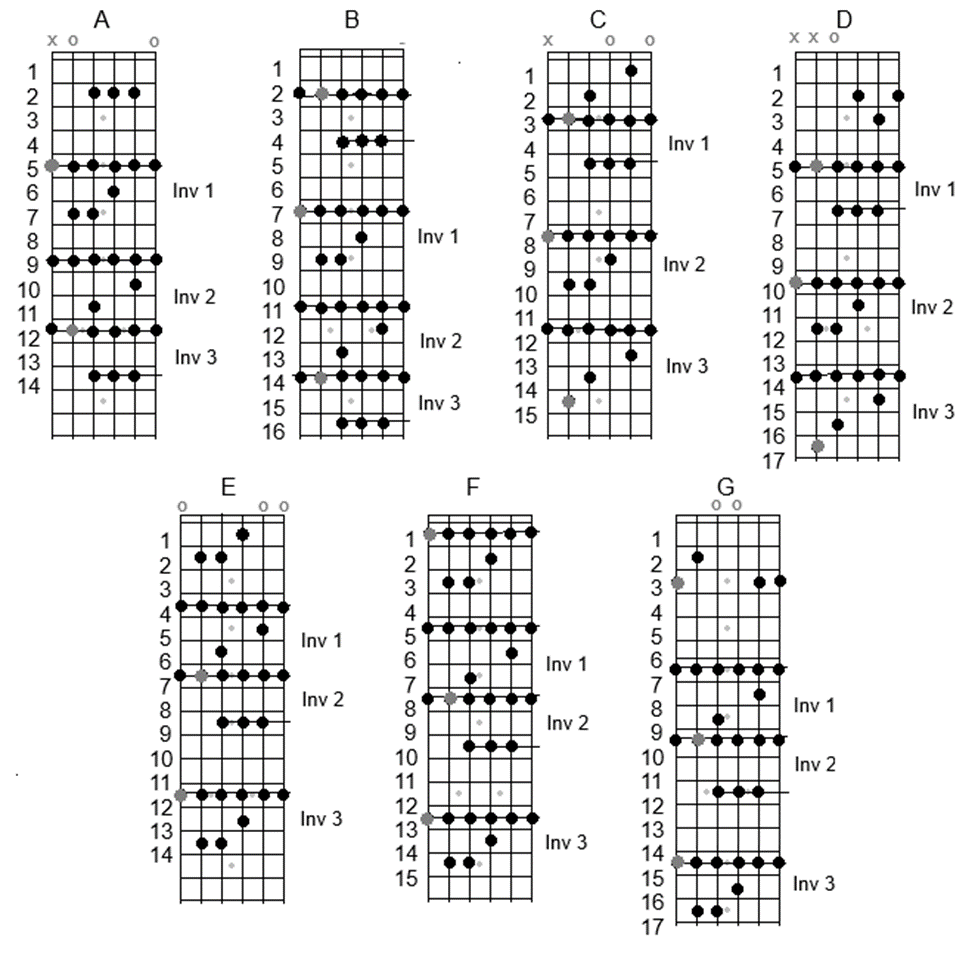Lessons 9 Harmonies
- H Kurt Richter
- Apr 5, 2024
- 4 min read
Supplement 2: Harmonies
When most musicians hear the word “harmony”, these days, they usually think of vocal harmony; meaning, the playing of a tone at a certain interval from a corresponding tone in a melody. For instance, if we use the “Do, Ra, Me” song as the melody, ascending, we can assume it is in an Ionian Key with “Do” as the 1st note, or root, of the Ionian Scale on which the Key is based, as in the Ionian C-Major Scale, with tones C (1st), D (2nd), E (3rd), F (4th), G (5th), A (6th), B (7th), and C’ (8th), where the prime indicates the first upper octave.
Thus, a one-part harmony to such a melody could use thirds or fifths, counted by holding the melody notes as roots of their own. Fifths are the most common of all vocal harmonies, thirds come next, but triads involving the root, 3rd, and 5th are also allowed. That is, harmonies involve chord theory, or rather, harmony theory is a subcategory of chord theory.
So, in this example, using the Key of Ionian C-Major,
C = Do, with G as a harmony;
D = Ra, with A as a harmony;
E = Me, with B as a harmony,
and so on.
Also, the same can be done using triads (3-voice chords) or larger chords to play a melody.
One-part harmony often uses either the 3rd or 5th to the main note. Two-part harmony uses a full triad, but a four-part harmony includes one extra note (such as a 7th, or the octave of the root) in addition to the triad.
Consider, then, the table below, showing the tones most often used as harmonies, where each note is counted as the root of its own triad in the Tonic Major Key. So, harmonies are modal in nature. Furthermore, for soloing, each note in the solo can be harmonized. Furthermore, be aware that a harmony note can be, and often is, the lower octave of the 3rd, 5th, or other note otherwise used as a higher harmony.
Basic Harmonies for Notes In The Tonic C-Major Key:
C-Major Key Lyrical Name Letter-Name Example Type of
Mode Name of Root Tone of Root Tone Harmonies Triad
Ionian Do C E (3rd), G (5th) C Major
Dorian Ra D F (3rd), A (5th) D Minor
Phrygian Me E G (3rd), B (5th) E Minor
Lydian Fa F A (3rd), C’ (5th) F Major
Mixolydian So G B (3rd), D’ (5th) G Major
Aeolian La A C’ (3rd), E’ (5th) A Minor
Locrian Ti B D’ (3rd), F’ (5th) C Min. Dim.
Ionian Octave Do’ C’ E’ (3rd), G’ (5th) C Major Octave
The Fundamental Keys were explained earlier. For in-between keys, use sharps or flats in the key-signature, or accidental sharps or flats as needed.
For guitarists performing harmonies, the easiest method is to use the lower octave of the 5th for each note in the melody or solo. Example: If C at the 3rd fret on the 5th string is the first
note in a melody or solo, then the lower octave of the 5th is the G at 3rd fret on the 6th string.
This is the same as counting the G as a root and playing its 4th (the C) along with it. Yet,
any tone in the Ionian Major scale can be used as a harmony, and/or either the lower or the
higher octave of that tone. But to stay in-key, a harmony tone may have to be altered (usually
flatted), such as with tones in the Fundamental Chord Progression of an Ionian Key with root other than C. In other words, always remember that harmonies, like chords, are modal.
Alternatively, there are cases where a melody deviates from the norm in some Key, or where
melodies/solos are performed in a different scale than that on which a song’s Key is based.
The Blues is a genre in which this is often the case, where a Dorian Minor scale is overlayed
on a chord-progression involving all 7th or 9th chords whose roots are the 1st, 4th, and 5th of an Ionian Major Key. In such instances, harmonies to a melody/solo are usually confined to the same scale in which the melody/solo is performed, rather than to the song’s Key.
Whenever an octave of a root is used as the only harmony, then it is not ordinarily called a “harmony”, as such, because it does not sound like other harmonies. Instead, it is simply
called an “octave”, and is in a class of its own. On the other hand, if an octave is used with
other tones making up harmonies, then it is technically considered one of the harmonies.
Theoretically, it makes no difference whether harmonies are above or below the tones in a melody/solo, or a combination of tones above and below, where the melody/solo is clear
and well-defined; either by consistently involving highest or lowest tones, or by amplitude
(so that the melody/solo stands out among the harmony tones). Exceptions to this rule
are many, however, and occur in complicated Jazz, large-scale orchestral compositions,
and/or purely vocal groups (e.g., church choirs, barber-shop quartets, etc.).
For more information, consult new or used music textbooks, or search online under “music
harmony”. Wikipedia, for instance, gives fairly comprehensive explanations, with historical
contexts, under the heading “Harmony”, and also states the differences between horizontal
harmony (chords), vertical harmony (melody), polyphony, counterpoint, perception, etc.



Comments